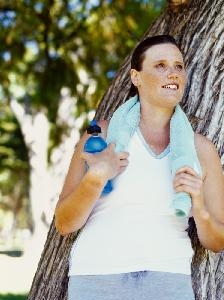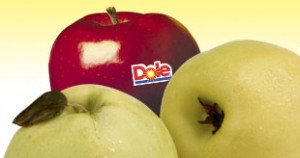We’ve previously discussed how to sparingly use a scale, proper dieting, and eating sweets sensibly. For the third and final part of this mini series, read on.
 As winter melts into spring, there are many different ways to change up your exercise routine. After months of keeping fit indoors, why not head outside and enjoy the beauty of spring? Spring is a time of renewal, rebirth, and rejuvenation. “Create in me a clean heart, O God, and renew a steadfast spirit within me” (Psalm 51:10 NKJV). Take this time to add new things to your current exercise routine. If you have been putting off your New Year’s resolution to begin exercising, allow the freshness of spring and the beauty of God’s creation to motivate you (after speaking with your doctor, of course).
As winter melts into spring, there are many different ways to change up your exercise routine. After months of keeping fit indoors, why not head outside and enjoy the beauty of spring? Spring is a time of renewal, rebirth, and rejuvenation. “Create in me a clean heart, O God, and renew a steadfast spirit within me” (Psalm 51:10 NKJV). Take this time to add new things to your current exercise routine. If you have been putting off your New Year’s resolution to begin exercising, allow the freshness of spring and the beauty of God’s creation to motivate you (after speaking with your doctor, of course).
The Department of Health and Human Services recommends 30 minutes of exercise per day to reduce the risk of chronic disease, maintain a healthy weight, and to decrease the risk of heart disease, osteoporosis, diabetes, and high blood pressure. Before exercising, talk to your doctor; during exercise, always make sure to listen to your body. Start off with just 10 minutes if that is all you can do. Gradually work your way up by increasing the length of time and intensity of your workout. Keep in mind that the faster we move, the more calories we burn. Increased effort means increased calorie usage. A heavier person will burn more calories because it takes more effort to move more weight.
Outdoor workouts
Your body needs a variety of exercise to get the most benefits. For example, after lifting 3-pound weights for six weeks, 3 pounds may not feel heavy anymore and your body is generally not as challenged. You may need to move on to 5-pound weights if you want to build muscle and continue to burn calories. Consider doing some of your weight routine outdoors. Getting outside gives your body many different opportunities for a change. Just the change in scenery can help your mind and lift your spirits. “The heavens declare the glory of God and the firmament shows His handiwork” (Psalm 19:1 NKJV). Take your exercise mat outside under that big oak tree or walk the distance of the shopping plaza to the next store instead of driving down. If you are a beginner and have no idea what moves to do, visit your local library or search on Amazon for an instructional video or an illustrated movement book to take with you wherever you go.
 Runners, and walkers, instead of using a treadmill, go outside and run or walk around your neighborhood. Running 5 mph (a 12-minute mile) burns around 472 calories per hour, while walking at a moderate pace (3 mph) will burn 207 calories per hour. If you do not live in a neighborhood with sidewalks, try mapping out a few paths through town. You can take many routes to keep the scenery different. There are also nature trails and city and national parks. You know your area; just do a little research to pick out the best and safest spot for you. Make sure someone knows your route, do not go into bad areas, stay alert, keep your cell phone with you, and stay in areas that have plenty of other people nearby. Being outside can offer your body something different. Hills add an element of difficulty if you are used to running or walking on a flat surface. As your endurance improves, pick routes with more hills and increase the length of time or distance that you go.
Runners, and walkers, instead of using a treadmill, go outside and run or walk around your neighborhood. Running 5 mph (a 12-minute mile) burns around 472 calories per hour, while walking at a moderate pace (3 mph) will burn 207 calories per hour. If you do not live in a neighborhood with sidewalks, try mapping out a few paths through town. You can take many routes to keep the scenery different. There are also nature trails and city and national parks. You know your area; just do a little research to pick out the best and safest spot for you. Make sure someone knows your route, do not go into bad areas, stay alert, keep your cell phone with you, and stay in areas that have plenty of other people nearby. Being outside can offer your body something different. Hills add an element of difficulty if you are used to running or walking on a flat surface. As your endurance improves, pick routes with more hills and increase the length of time or distance that you go.
If you are not much of a running/walking sort of person, there are many other things to do outside that can offer adequate exercise. Most city parks have one or more of the following: basketball courts (472 calories burned), tennis courts (413), volleyball courts, and softball/baseball fields (295). A non-competitive volleyball game with 6–9 members burns 177 calories per hour, while a competitive game in a gymnasium burns 236 calories per hour. Take your game to a beach court, and burn 472 calories per hour. Swimming laps with light-to-moderate effort will burn around 472 calories, while swimming those laps fast and vigorously will burn 590.] Grab a few friends and head on down to the nearest court or field for a few hours of fun that will hardly seem like the same old workout. Some places even have leagues in the spring and summer months that you could join. Many national parks have hiking trails, canoeing (177-413), bike trails(472 for 12-14 mph), and rock climbing(649 to ascend and 472 rappelling) to give your body a different challenge. Make sure to pick up a map, follow the designated trails and take all safety precautions. (For more information about calorie burning activities, visit Nutrition Strategy.)
As you consider the endless possibilities of renewing your exercise routine, allow springtime to revive your relationship with God. Keep your exercise routines in the proper perspective, and do not allow yourself to neglect your responsibility for your spiritual growth. “For bodily exercise profits a little, but godliness is profitable for all things, having promise of the life that now is and of that which is to come” (1 Timothy 4:8 NKJV). Include time with God as you are enjoying His wonderful gift of spring.
*All calories references in parentheses are calories burned per hour of activity for a 130-pound person. Calories burned will be higher for a heavier person and lower for a lighter person.
Food of the Month: Apples
 Apples taste great, are easily portable, and are ready to eat. They also have many health benefits. Apples are an excellent source of vitamin C and fiber, which can improve bowel health, lower cholesterol, and reduce the risk of heart disease, cancer, strokes, and diabetes.
Apples taste great, are easily portable, and are ready to eat. They also have many health benefits. Apples are an excellent source of vitamin C and fiber, which can improve bowel health, lower cholesterol, and reduce the risk of heart disease, cancer, strokes, and diabetes.
Apples come in numerous varieties, such as Red Delicious, Golden Delicious, Granny Smith, Fuji, Royal Gala, Braeburn, Jonathan, McIntosh, Cripps Pink, and many more. Check with suppliers in your local area to find out which varieties are locally popular. Each variety of apple has its own taste. They Red Delicious, Fuji, and Royal Gala taste sweet; Golden Delicious and Granny Smith are tangy; and Braeburn and Cripps Pink have a tart taste. Fuji, Golden Delicious, and Granny Smith apples are good for cooking or baking. All varieties are good for eating out of hand or in salads.
Choose apples that are firm and smooth with no bruises. Always store apples in a plastic bag in a crisper or refrigerator drawer away from vegetables. (Apples can alter the taste of some vegetables if stored too closely.) Wash apples thoroughly before cutting or eating. One apple, with the skin, depending on the variety and size, can range from around 55 calories for a small (3.7oz) to 110 calories for a very large (7.5 oz.) Check nutrition information on the specific varieties available in your area. (For more information about apples, visit Dole’s website.) As you head outside to renew your workout, grab an apple and enjoy the delicious benefits.
By Sherri Houmard
Speak Your Mind